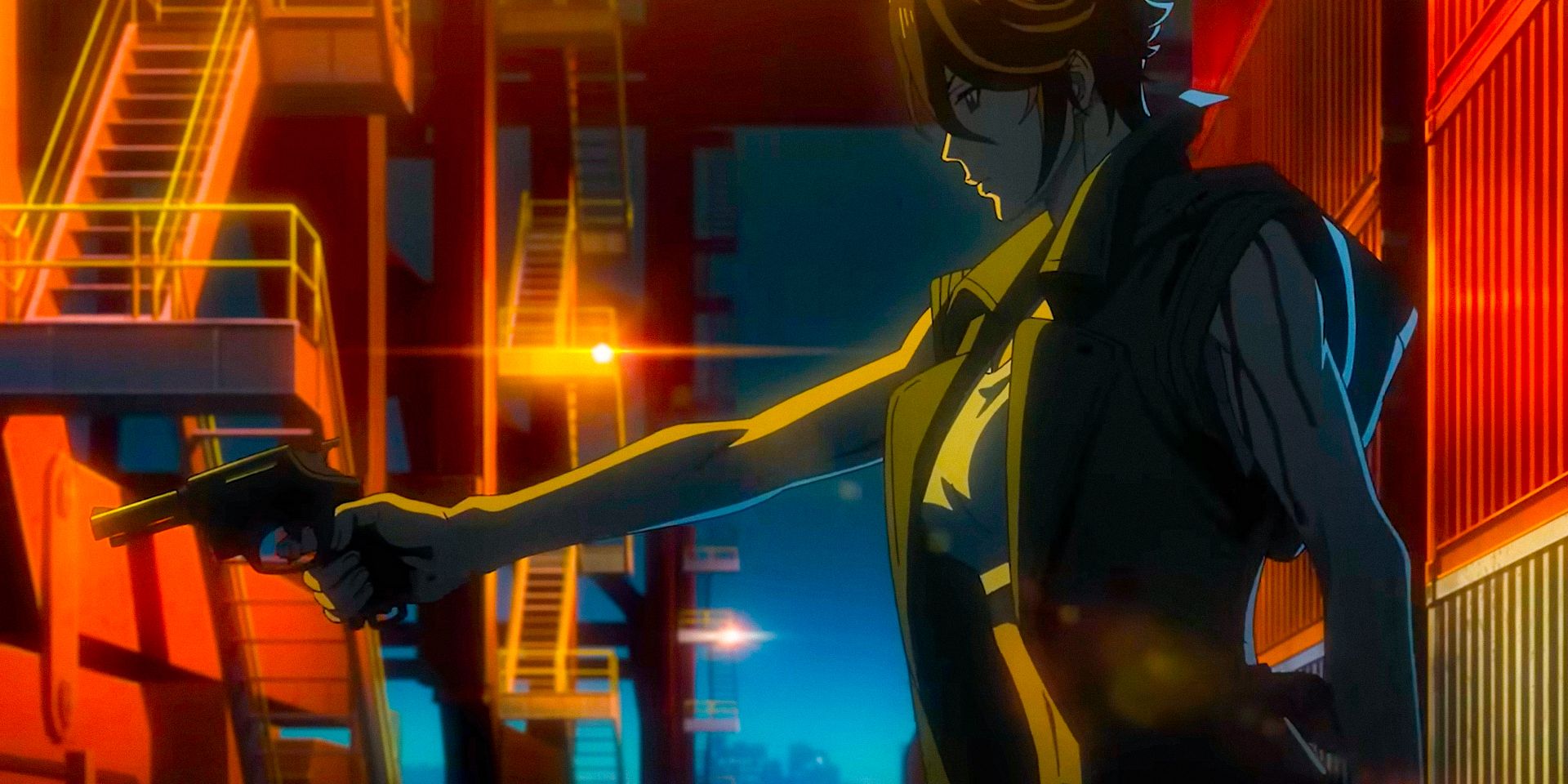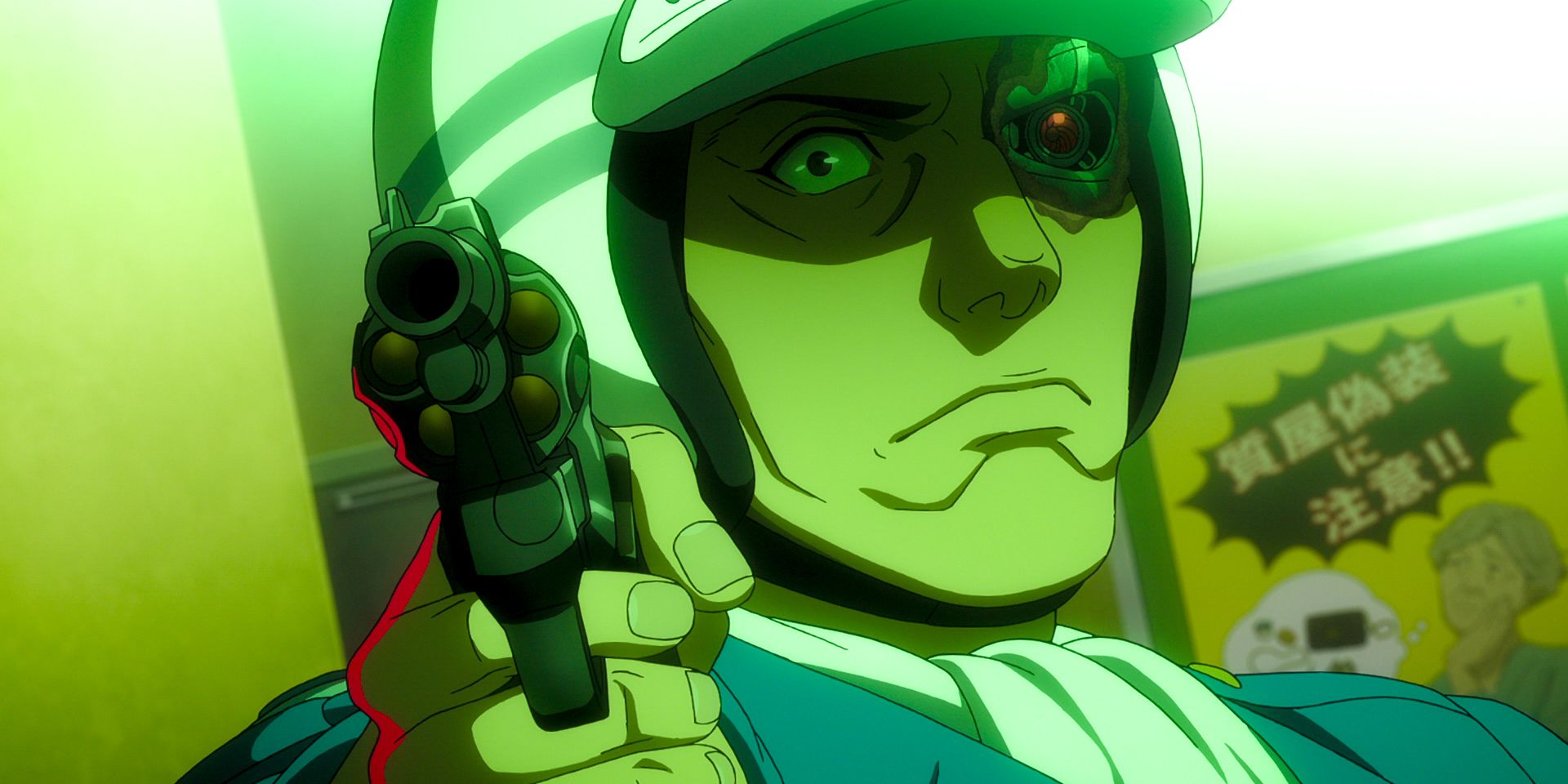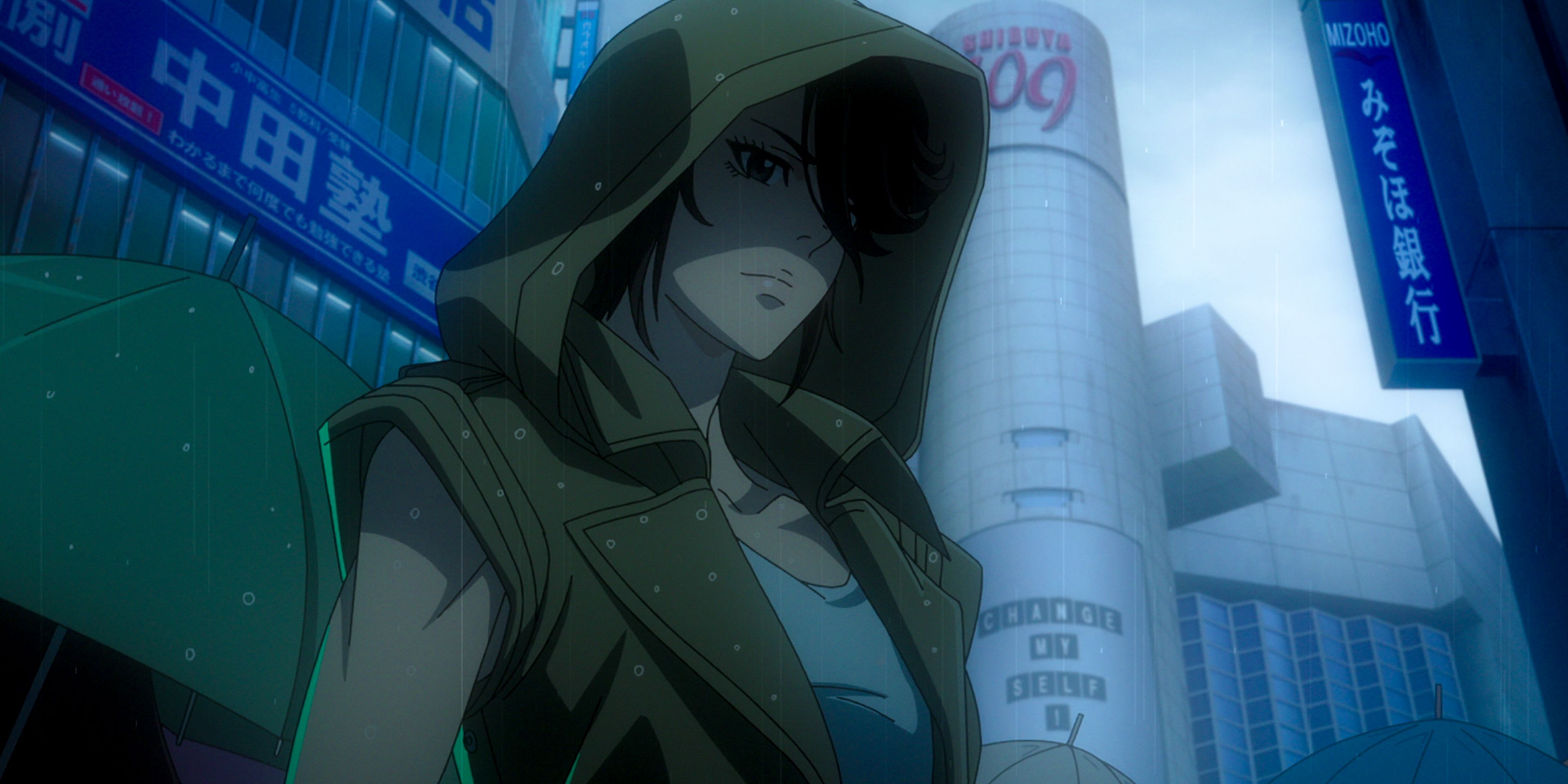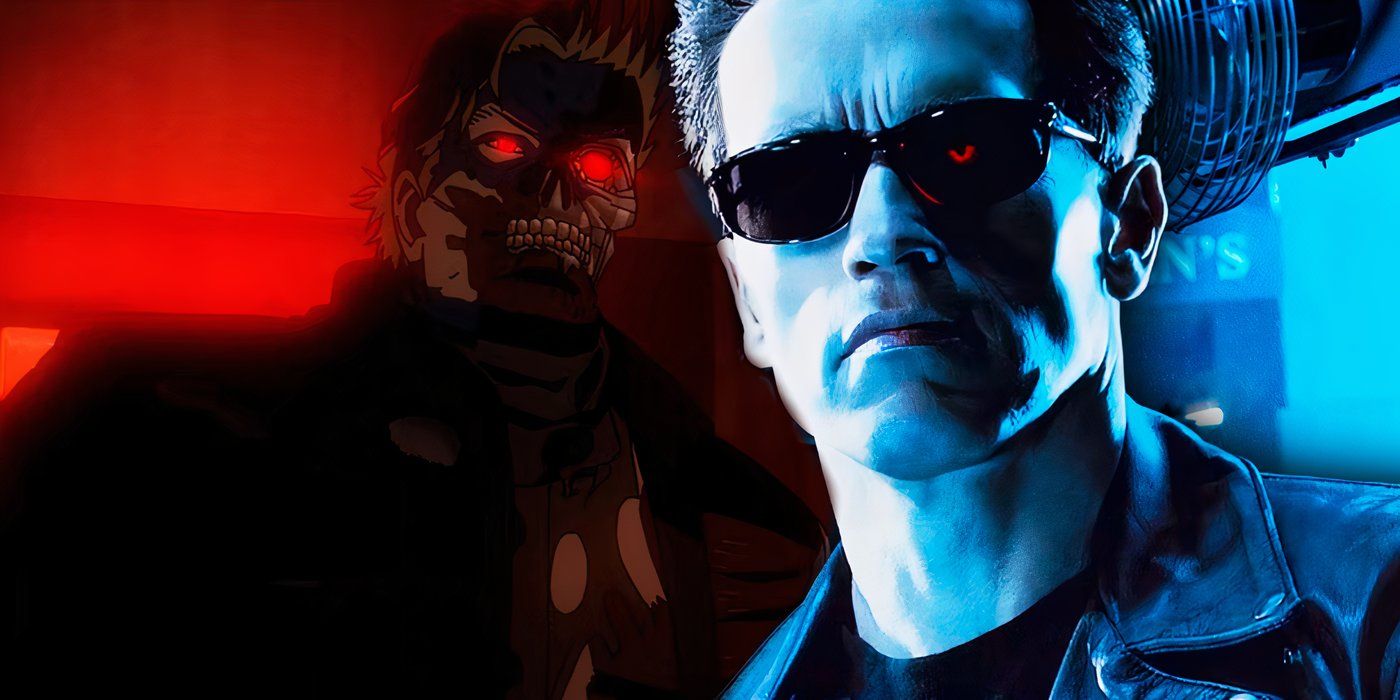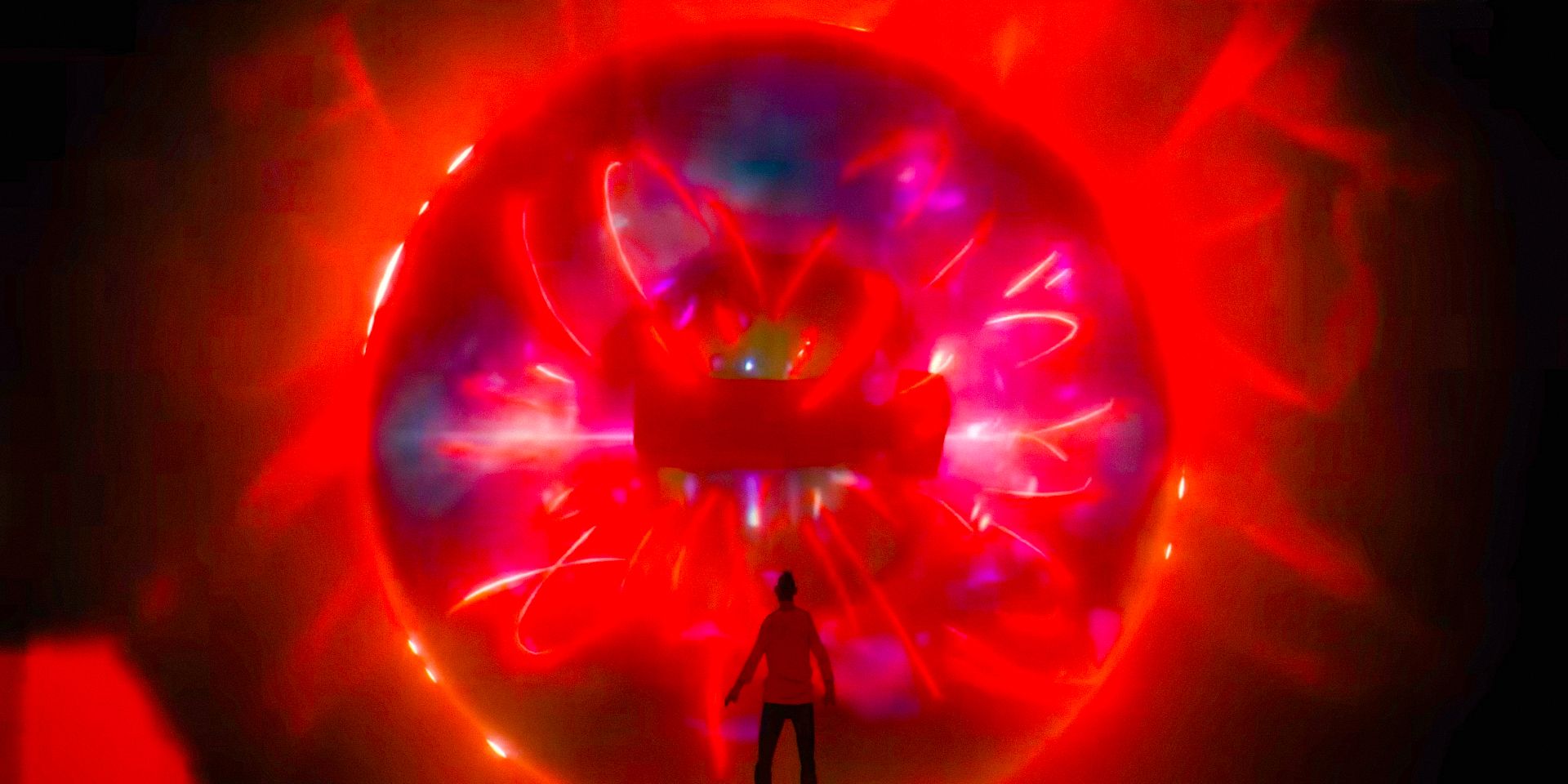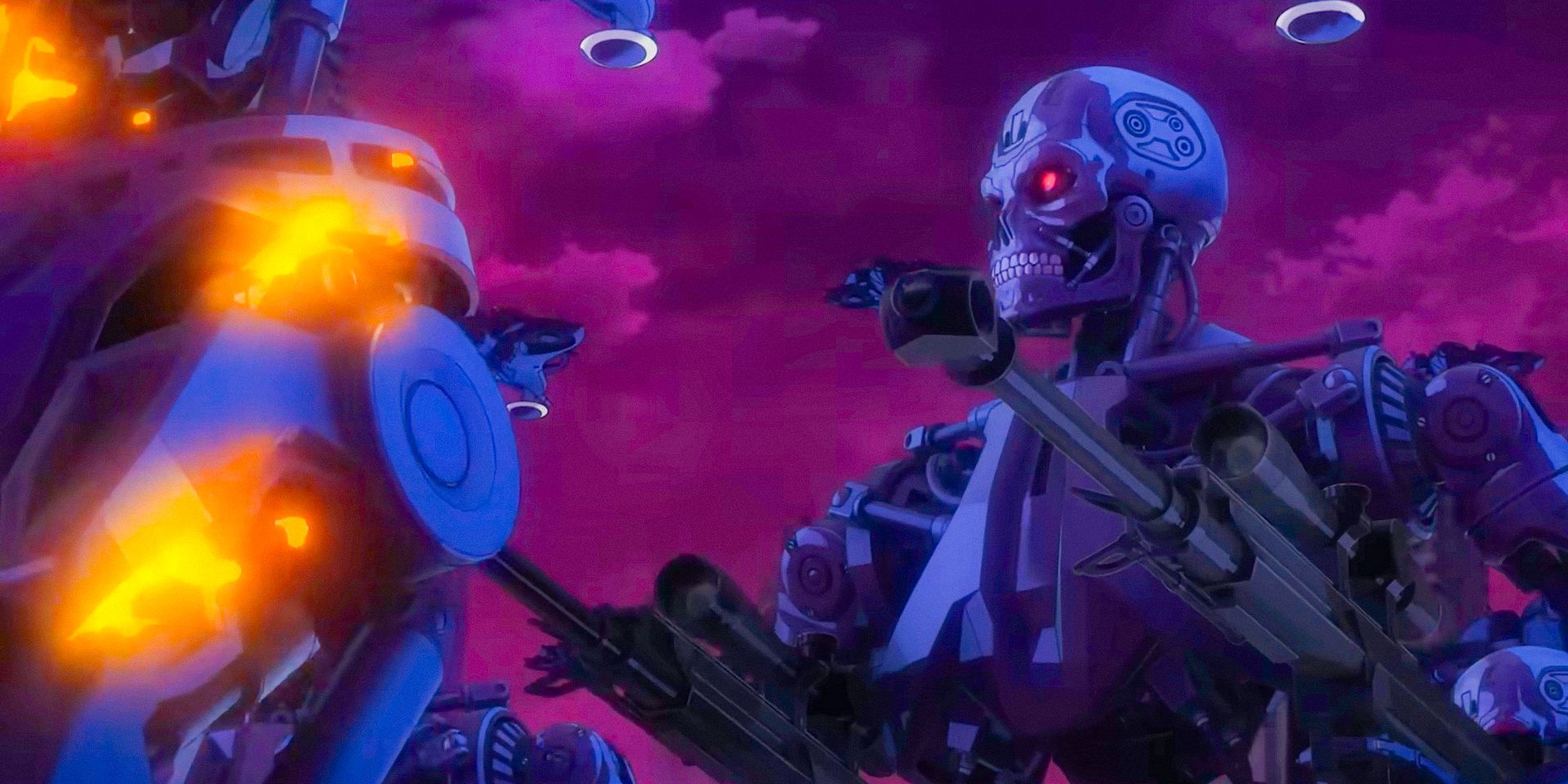Summary
- Terminator Zero is a fresh take on the franchise, featuring an anime art style, Japanese storytelling, and a new AI competitor to Skynet.
- Composers Michelle Birsky and Kevin Henthorn drew inspiration from Radiohead to create a dark, existential dread-filled score for the series.
- The series’ music plays a significant role in shaping the animation and differentiating between timelines, with unique soundscapes for each era and character.
The Terminator franchise goes anime in Terminator Zero, a new Netflix series developed by Mattson Tomlin. Set in Japan, Terminator Zero tells the story of Malcolm Lee, a scientist developing a competitor to Skynet, and his family, who soon find themselves pursued by a robotic killer. The eight-episode series boasts a cast that includes Timothy Olyphant, Rosario Dawson, André Holland, and Sonoya Mizuno.
As seen in the Terminator Zero trailer, the series is a big departure from all the projects that came before. Despite still being rooted in the Terminator universe, Terminator Zero’s art style, Japanese language storytelling, and alternative to Skynet all signal a fresh step for the franchise. The list of exciting new elements extends to the series’ music, which was contributed by the composing team of Michelle Birsky and Kevin Henthorn.
Birsky and Henthorn are a married composing duo whose past work includes The Lesbian Bar Project and Mother/Android. The pair drew from past Terminator movies for musical inspiration, but also drew on their indie band roots to craft a sound unique to the anime. In conversation with Screen Rant, Birsky and Henthorn revealed their instrumentation choices, reflected on how Terminator Zero fits into the larger franchise, and more. Screen Rant is also excited to present a piece from their soundtrack for the series titled “It Will Never Be The Same”.
Michelle Birsky & Kevin Henthorn Reveal Their Musical Influences & Collaborative Process
Screen Rant: This feels different from any other Terminator project. Coming into this, where did you look for musical inspiration?
Kevin Henthorn: We were inspired a little bit by Terminator 1. We took the metal hits to immediately identify, “This is Terminator,” and some synth inspiration, but instead of going super ‘80s with the synths, we went pretty modern.
Michelle Birsky: Mattson also made it clear that he wanted this to be a darker Terminator, with a little more of a serial killer vibe and a lot of existential dread. It really is about human versus machine in the most intense way. We were really inspired by Radiohead.
Kevin Henthorn: I feel like there’s no quicker way to existential dread than listening to Kid A. We would play it a lot. It would help us get centered again. We combined a lot of those elements, and we wanted to stray from the OG Terminator stuff. We wanted something new. It was a totally new story.
Michelle Birsky: And it’s anime. There was a lot of room to play with characters and different themes, and there’s a lot of music, so it was nice to have that format. I think if it had been live-action and it had been a movie, it would’ve been harder, but because it was such a different format, we were able to explore.
What is your collaboration like?
Michelle Birsky: It’s super collaborative. When we get a project, we start by just jamming together. We both come from the indie band scene, so I think it’s really natural for us to play instruments together and come up with things. We usually try to stay away from the computer, record on our iPhones, and get the ideas flowing.
Once we’re actually scoring to picture… I know a lot of composers split up cues. We don’t do that. We either write together or we trade off. Someone’s always at the computer and we trade off on the same cue, which is just like an editing process at a certain point where you’re going back and forth and crafting it until it’s its best.
Kevin Henthorn: And it’s kind of fun because, at this point, we don’t know really who wrote what. It feels like the ego is stripped away and we’re just serving the greater picture.
Terminator Zero’s Score Helped Shape The Series’ Animation
The very, very beginning of the series is a very long sequence with a lot of music and no dialogue, so right off the bat, you two are responsible for shaping how this is going to feel. Was that a big weight on you two?
Kevin Henthorn: Yeah, but I feel like it was also really exciting. We got in so early with this series that I feel like our music was integral to how it was being created. We had created these demos that we showed to Mattson before any scripts were even written. We [thought], “Mattson. Terminator. Anime. What does that sound like?” and we gave him some unsolicited material.
He put that into a music library where Production I.G was doing all of these animatics, and they started just throwing the demos in. That gave us a lot of confidence because it was very daunting having a five-minute action sequence right off the bat.
Michelle Birsky: That piece was already in there. It wasn’t completely fleshed out, but they had already animated to parts of it. It was hard to then make it super long, change things, and make it work, but because it was already in there, that definitely eased the fear.
Birsky & Henthorn Discuss Key Themes & Merging The Organic With The Robotic
With the Terminator character, the music somehow made everything feel inevitable. It was very steady and suspenseful. How did you go about deciding how to score that character?
Kevin Henthorn: To the steadiness, Mattson always wanted [it to feel like] we are in the Terminator’s headspace and we’re not deviating. One thing he kept bringing up is—I think it’s in T2—a hallway scene where things slow down, the Terminator’s there, and it’s just this slow, repetitive clanging. I think that type of spirit was something we definitely brought to the character.
Then, we also started exploring different motifs that would clearly tell you, “The Terminator’s here.” We had a two-note motif, almost like Jaws, and we’d have certain sound effects that would come in, and radar sounds for when he was on the prowl. We just stuck to a set number of motifs for him.
In terms of instrumentation, can you talk about what you ended up using? Did you pull any classic synths or was it all more modern equipment and techniques?
Michelle Birsky: It was all pretty new, I would say. I think the one very similar sound is the metal hits that we use. We sampled that ourselves. I think we used pots and pans and the metal side of our instrument stands—hitting them with drumsticks and then sampling them—and then obviously made them sound much bigger.
Kevin Henthorn: We used the Prophet Rev2 for a lot of the arpeggiated stuff, but also I feel like we were pulling from a lot of different synths. We definitely pulled a lot from Pigments, the Arturia plugin, but it’s also kind of this haze of… there’s got to be 20 or more, different synths on this score.
Michelle Birsky: The other piece of it besides the synthesizer stuff was creating sound with voices. We did a choir, which was really, really cool. We recorded with the London Contemporary Orchestra, [and] having those human voices was awesome. Then, we also did a lot of manipulating of acoustic instruments and voices. So, [we’d use] a guitar, a cello, a violin, and sample them and reverse them. One of the Terminator sounds is a reverse, chopped-up violin. It was a lot of taking what is pure and natural and messing with it with computers.
What made you want to do that?
Kevin Henthorn: With the content, it just felt natural. We have this Terminator that’s always in disguise trying to act like humans, and it just felt like we really wanted to play with that dichotomy of taking organic stuff and destroying it sonically.
How Terminator Zero’s “Desolate And Scary” Future Was Made To Sound Different
It seemed like, especially in the beginning, there’s a good bit of jumping between timelines. We’re seeing the ‘90s and the future. Did you want to create distinct sonic textures for the different times?
Michelle Birsky: We definitely tried to make the future sound very, very different from the ‘90s, because the future is more desolate and scary—
Kevin Henthorn: And also more human. We did a lot of choir for the future.
Michelle Birsky: And a lot of bells, and a flute… it was much more reverb-y and desolate. Every time we went there, we kind of distinguished between the two. That said, there are instruments that carry over to tie it together and to tie the characters together, but we wanted to make sure that the future had its distinct sound.
This One Musical Terminator Easter Egg Made It Into Terminator Zero
Were you ever tempted or asked to incorporate any kind of musical Easter eggs to the the legacy of Terminator?
Michelle Birsky: There’s one cue that we love, [where] Production I.G and the director, (Masashi) Kudo, really, really wanted the original drum line from Terminator 1 to be in it. It’s in the last scene of episode one in our version of the Terminator theme, and it ends with that drumbeat.
Michelle Birsky Teases A Big Arc For One Key Character
Did you have a favorite aspect of this show to score?
Michelle Birsky: I think it’s different for both of us. I really loved the character of Misaki, who is the nanny to the children. She probably has one of the bigger character arcs over the series. A lot of things happen to her, and she changes drastically. We came up with her theme early on and then we stripped it down. In the first episode, you’re just hearing this little piano motif that’s a few notes, and then as it gets bigger and bigger. As her character changes and more things happen to her, we brought in the choir to really flesh it out. At one moment in the show, there is an acapella scene where the vocals are just doing all these crazy technique things, and it’s my favorite. It’s just like one minute, but it’s really cool to be able to have this character change so much over the course of the series, and have the music evolve with her.
Kevin Henthorn: The character work was really fun because, in anime, you just feel like you can go pretty bold and big for these characters. We went for it for a lot of these. For me, I loved scoring Terminator on the prowl. At the beginning of episode three, there’s a long, no-dialogue scene, and it was really fun to get into his head. It was like all of a sudden, we were watching Seven or something, and it just felt very fun and serial killer vibes.
Terminator Zero Is “New Territory” For The Franchise
There are so many Terminator fans out there. I know this is its own thing, but is there anything you can say to people who are wondering how this intersects with everything else that’s out there?
Kevin Henthorn: I feel like we are in new territory, and the franchise, I believe, has needed new territory for a while. I hope fans are excited and welcoming [of] it. It’s not completely divorced, it is still Terminator, but I feel like this is a different take on the story. It’s based in family, it’s really emotional, and I hope people are excited.
About Terminator Zero
2022: A future war has raged for decades between the few human survivors and an endless army of machines. 1997: The AI known as Skynet gained self-awareness and began its war against humanity.
Caught between the future and this past is a soldier sent back in time to change the fate of humanity. She arrives in 1997 to protect a scientist named Malcolm Lee who works to launch a new AI system designed to compete with Skynet’s impending attack on humanity. As Malcolm navigates the moral complexities of his creation, he is hunted by an unrelenting assassin from the future which forever alters the fate of his three children.
Check out our other Terminator Zero interviews with:
All eight episodes of
Terminator Zero
hit Netflix on August 29.



